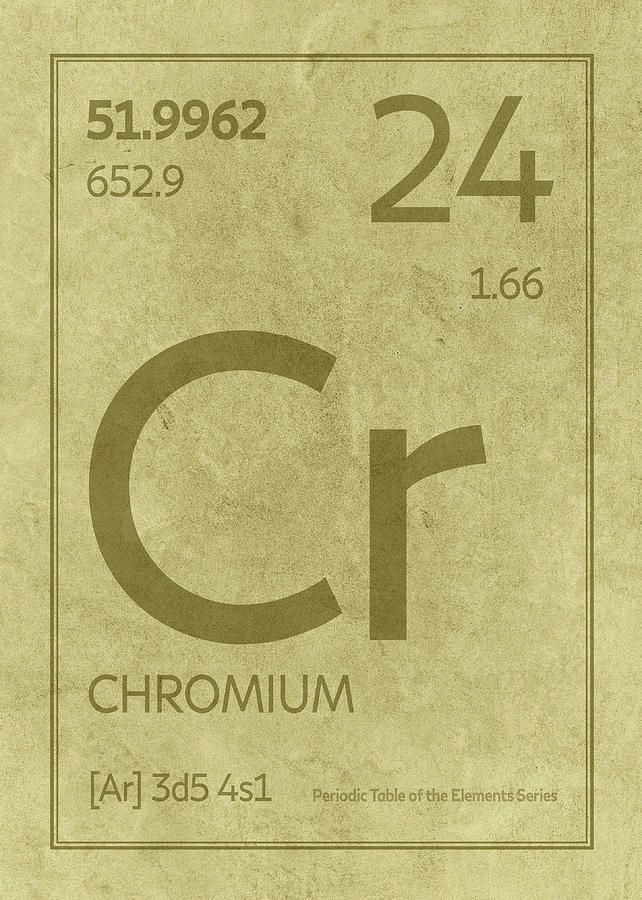
For additional information visit Linking to and Using Content from MedlinePlus. Any duplication or distribution of the information contained herein is strictly prohibited without authorization. Links to other sites are provided for information only - they do not constitute endorsements of those other sites. Stainless steel is hard and resists corrosion due to the addition of chromium. Like many transition metals, it has a high melting point (1,907 degrees C, 3,465 F) and a high boiling point (2,671 degrees C, 4,840 F). A licensed physician should be consulted for diagnosis and treatment of any and all medical conditions. Chromium is a hard, lustrous, steel-gray metal. Chromium (Cr) is a trace element critical to human health and well-being. The information provided herein should not be used during any medical emergency or for the diagnosis or treatment of any medical condition. This site complies with the HONcode standard for trustworthy health information: verify here.

(Carbon is the first and boron is the second). Learn more about A.D.A.M.'s editorial policy editorial process and privacy policy. Chromium element is the 3rd hardest element found on the entire periodic table. is among the first to achieve this important distinction for online health information and services.

follows rigorous standards of quality and accountability. is accredited by URAC, for Health Content Provider (URAC's accreditation program is an independent audit to verify that A.D.A.M. Ask your health care provider which amount is best for you.Ī.D.A.M., Inc. Women who are pregnant or producing breast milk (lactating) need higher amounts. Specific recommendations depend on age, sex, and other factors (such as pregnancy). The best way to get the daily requirement of essential vitamins is to eat a balanced diet that contains a variety of foods from the food guide plate.

DRI is a term for a set of reference intakes that are used to plan and assess the nutrient intakes of healthy people. Dosages for chromium, as well as other nutrients, are provided in the Dietary Reference Intakes (DRIs) developed by the Food and Nutrition Board at the National Academies of Sciences, Engineering, and Medicine.


 0 kommentar(er)
0 kommentar(er)
